Pool Sand Types: Crystal-Clear Water with the Right Filter Sand
Choosing the right sand for your pool filter can be confusing with options like silica, zeolite, and more.
You might be wondering which type is best for your Intex pool, how often to change it, or even what the differences are in the first place.
I will break down the different pool sand types, their pros and cons, and help you choose the perfect one for a clean and sparkling pool.
Understanding Pool Filter Sand
Think of your pool filter as a giant sieve. The sand inside is what actually traps all the dirt and gunk to keep your water clean. This special sand is designed to catch tiny bits of debris that you can’t even see, like dust, algae, and even tiny bugs.
Using the right kind of sand is super important. The wrong sand can mean cloudy water, a filter that has to work extra hard, and more time spent cleaning. It’s like trying to catch fish with a net full of holes – it just won’t work well!
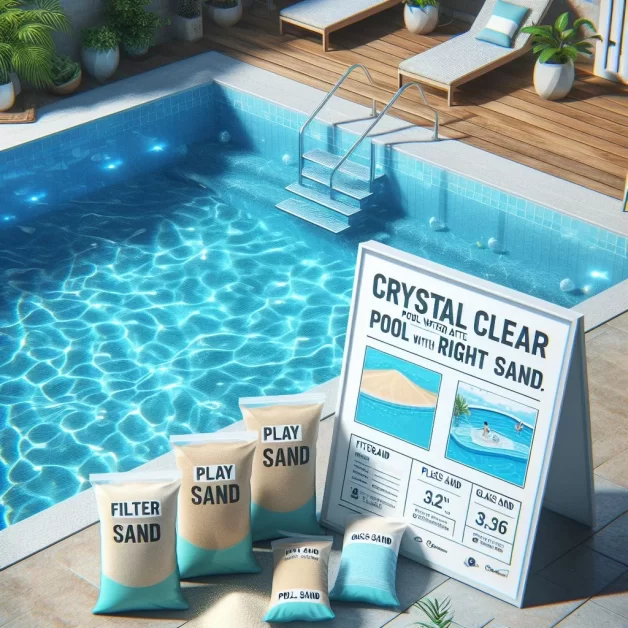
You might be tempted to use play sand or the kind of sand used for building, but don’t do it! These types of sand aren’t made for filtering pool water. They can damage your filter and won’t keep your pool clean. Stick with sand that’s specifically designed for pool filters.
Achieve sparkling pool water with our expert guide on effective pool sand filter cleaning tips.
Here are things to know about pool sand:
- Grades: It comes in different grades, typically from #16 to #20. The higher the grade number, the finer the sand. #20 Sand is the most common type used in residential pools.
- Filtration: It works by trapping dirt and debris in the spaces between the sand grains. The size and shape of the sand grains are essential for effective filtration. Sand that is too fine will clog the filter, while sand that is too coarse will not trap enough debris.
- Maintenance: Pool sand must often be replaced every 3-5 years or more if it becomes clogged or contaminated. When replacing it, using the correct grade of sand for your filter is essential.
- Alternatives: Some alternative filter media are available for pool filters, such as glass beads and diatomaceous earth. However, It is still the most common and cost-effective option.
What are pool sand types?

1. Silica Sand:
- It doesn’t last as long as some alternative media and needs to be replaced every 3-5 years.
- This is the most common and traditional type of pool sand.
- It’s made up of crushed and rounded quartz grains, which are naturally occurring and readily available.
- It comes in various grades, typically #16 to #20, with #20 being the most popular for residential pools due to its ideal filtration efficiency and flow rate balance.
- It’s relatively inexpensive and easy to find, making it the most cost-effective option for many pool owners.
2. Zeolite Sand:
- This is a newer pool sand types made from a naturally occurring mineral called zeolite.
- Zeolite has a honeycomb-like structure that traps dirt, debris, ammonia, and other contaminants, improving water clarity and reducing the need for chemicals.
- It can last up to twice as long as silica sand, typically 5-7 years, and requires less frequent backwashing.
- However, zeolite sand is more expensive than silica sand.

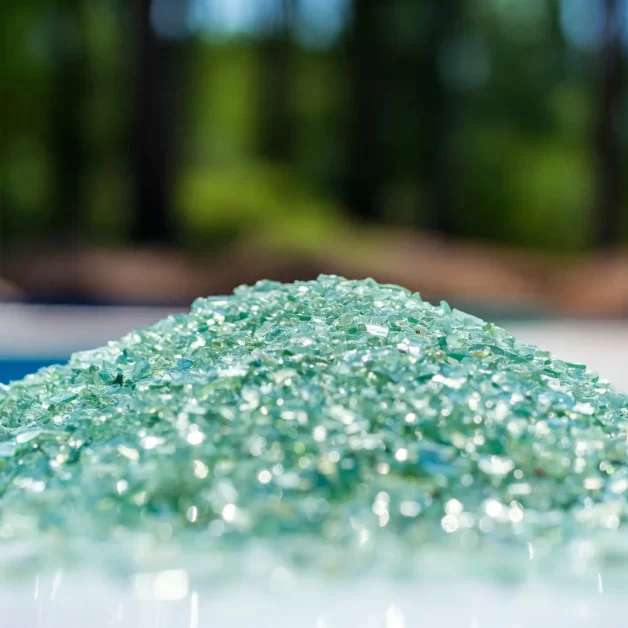
3. Filter Glass: Eco-Friendly Elegance
Glass filter media emerges as a sustainable alternative for the environmentally conscious pool owner.
Crafted from recycled glass, this eco-friendly option contributes to waste reduction and exhibits impressive filtration capabilities.
The finely crushed glass provides a smooth surface, enhancing filtration efficiency while being kind to the planet.
The feature table of three main pool sand types filter media:
| Feature | Silica Sand | Zeolite Sand | Filter Glass |
|---|---|---|---|
| Material | Crushed quartz | Zeolite mineral | Recycled glass |
| Filtration | Traps dirt and debris (20-40 microns) | Traps dirt, debris, ammonia, and other contaminants (down to 5-10 microns) | Traps dirt, debris, and fine particles (down to 3-5 microns) |
| Lifespan | 3-5 years | 5-7 years | 7-10 years |
| Cost | Less expensive | More expensive | Moderate |
| Maintenance | Regular backwashing | Less frequent backwashing | Less frequent backwashing |
| Pros | Affordable, easy to use, durable | Superior filtration, longer lifespan, improved water clarity | Excellent clarity, durable, captures fine particles |
| Cons | Not ideal for fine particles, requires more frequent backwashing | Higher initial cost | Higher initial cost than silica sand |
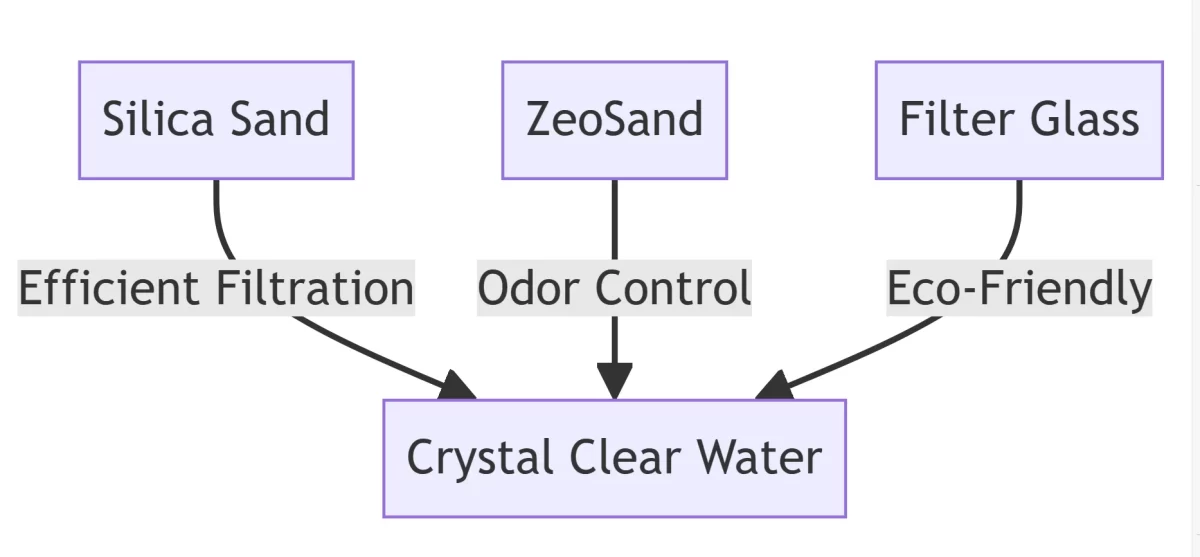
Other Types of Swimming Pool Sand:
1. Play Sand:
- Perfect for children’s sandboxes and sensory candy.
- Typically finer and softer than other types of Sand, making it easier for kids to mold and shape. Sandten is treated with heat or chemicals to reduce the risk of bacteria and fungus growth.
- Not suitable for construction or industrial purposes.
2. Filter Sand:
- Specifically designed for use in swimming pool filters.
- Made of rounded and graded silica grains that effectively trap dirt and debris from pool water.
- Comes in various grades, with #20 being the most common for residential pools.
- Needs to be replaced every 3-5 years to maintain optimal filtration performance.
3. Beach Sand:
- Found on beaches, naturally deposited by erosion and wave action.
- Composed of various minerals and materials, including quartz, feldspar, and shell fragments.
- Grain size can vary depending on the beach, ranging from delicate and silky to coarse and gritty.
- It is unsuitable for construction or industrial purposes due to its diverse composition and potential impurities.
4. Black Beauty Sand:
- Also known as garnet Sand, it’s an industrial abrasive used for sandblasting, metal cleaning, and water filtration.
- Made of dark red or brown garnet mineral grains with sharp, angular edges.
- Highly effective for removing rust, paint, and other coatings.
- Requires specific handling and safety precautions due to its abrasive nature.
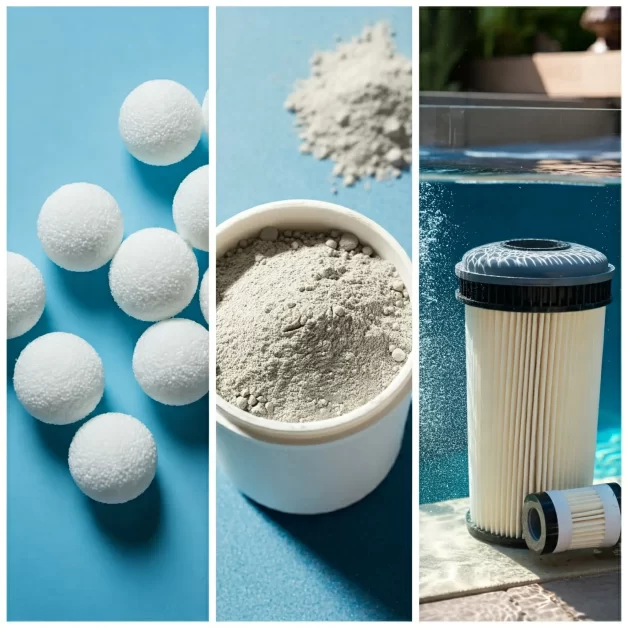
Other Filter Media:
- FilterBalls: These are lightweight balls that work like sand but are easier to clean.
- Diatomaceous Earth: This powder is great at filtering out tiny particles, but it can be messy to handle.
- Cartridge Filters: These filters use a cartridge instead of sand and are easy to use, but they may need to be replaced more often.
NOTE
Remember, a pool is an investment, and choosing the suitable filtration media is critical to maximizing your enjoyment and water clarity. So, explore, compare, and make an informed splash into the exciting world of pool sand alternatives!
Pros and Cons:
| Feature | Pros | Cons |
|---|---|---|
| Cost | Affordable | Expensive sand replacement |
| Maintenance | Low | Regular backwashing |
| Durability | Long lifespan | Needs sand change every 5-7 years |
| Filtration | Effective for large particles | Not ideal for very fine particles |
| Ease of use | Simple to operate | Can be heavy and bulky |
Troubleshooting: Addressing Common Concerns
Even with the best sand, you might run into a few hiccups with your pool filter. But don’t worry, most problems have simple solutions! Here common issues and how to fix them:
1. Cloudy Water
- Possible causes: Dirty filter sand, incorrect sand type, poor water chemistry.
- Solutions: Backwash the filter, check your sand type against your filter’s recommendations, test and balance your pool water chemistry.
2. Sand in the Pool
- Possible causes: Damaged filter, broken lateral (the arms inside the filter that distribute water), too much sand in the filter.
- Solutions: Inspect the filter for cracks or damage, check the laterals for breaks, remove excess sand if the filter is overfilled.
3. Low Filter Pressure
- Possible causes: Dirty filter sand, clogged impeller (the pump part that moves water), air leak in the system.
- Solutions: Backwash the filter, clean the pump impeller, check for air leaks in the pipes and connections.
4. High Filter Pressure
- Possible causes: Clogged filter sand, blocked return lines (the pipes that send water back to the pool).
- Solutions: Backwash the filter, check the return lines for any blockages.
5. Short Filter Cycles
- Possible causes: Too much debris in the pool, filter sand needs replacing.
- Solutions: Clean the pool thoroughly, replace the filter sand if it’s old or damaged.
Regular backwashing, proper maintenance, and occasional replacement ensure your chosen sand performs optimally, keeping your pool in top condition.
Maintaining Your Pool Filter Sand
Even the best filter sand needs a little TLC! Over time, sand loses its ability to trap tiny bits of dirt. It’s like a sponge that gets full and can’t hold any more water. Changing your sand regularly keeps your pool clean and helps your filter work its best.
When to Change Your Sand:
Most pool experts say you should change your sand every 3 to 5 years. But, if your pool gets a lot of use or you notice the water isn’t as clean as it used to be, you might need to change it sooner.
How to Change Your Sand:
Changing filter is easy, here’s the basic idea:
- Turn off the pump: Safety first! Make sure the power is off before you start.
- Drain the filter: There’s a drain plug on your filter tank. Let the water flow out.
- Remove the old sand: Scoop out the old sand and put it in a bucket.
- Add new sand: Pour in the correct amount of new sand. (Check your filter’s manual for the right amount.)
- Rinse the filter: Turn the pump back on and run it for a few minutes to flush out any leftover dirt.
Want more detailed instructions? Check out this helpful guide: https://www.swimmingpool.com/maintenance/pump&filter/changing-sand-in-your-pool-filter/
Additionally, Romanelli Pools provides further insights, including the importance of selecting the correct sand type and ensuring proper reassembly for efficient filtration.
Explore More
Give Your Pool a Sand Makeover
Swapping out old, worn-down Sand periodically restores filtration performance. At Hot Tub Patio, our pool pros can replace your Sand in less than a day. We only use the highest quality filter media to keep your pool sparkling all season.
Ready to give your pool a sand makeover? Contact Hot Tub Patio for a free quote. Investing in fresh Sand ensures your pool water stays crystal clear for years. What’s your favorite type of pool sand?







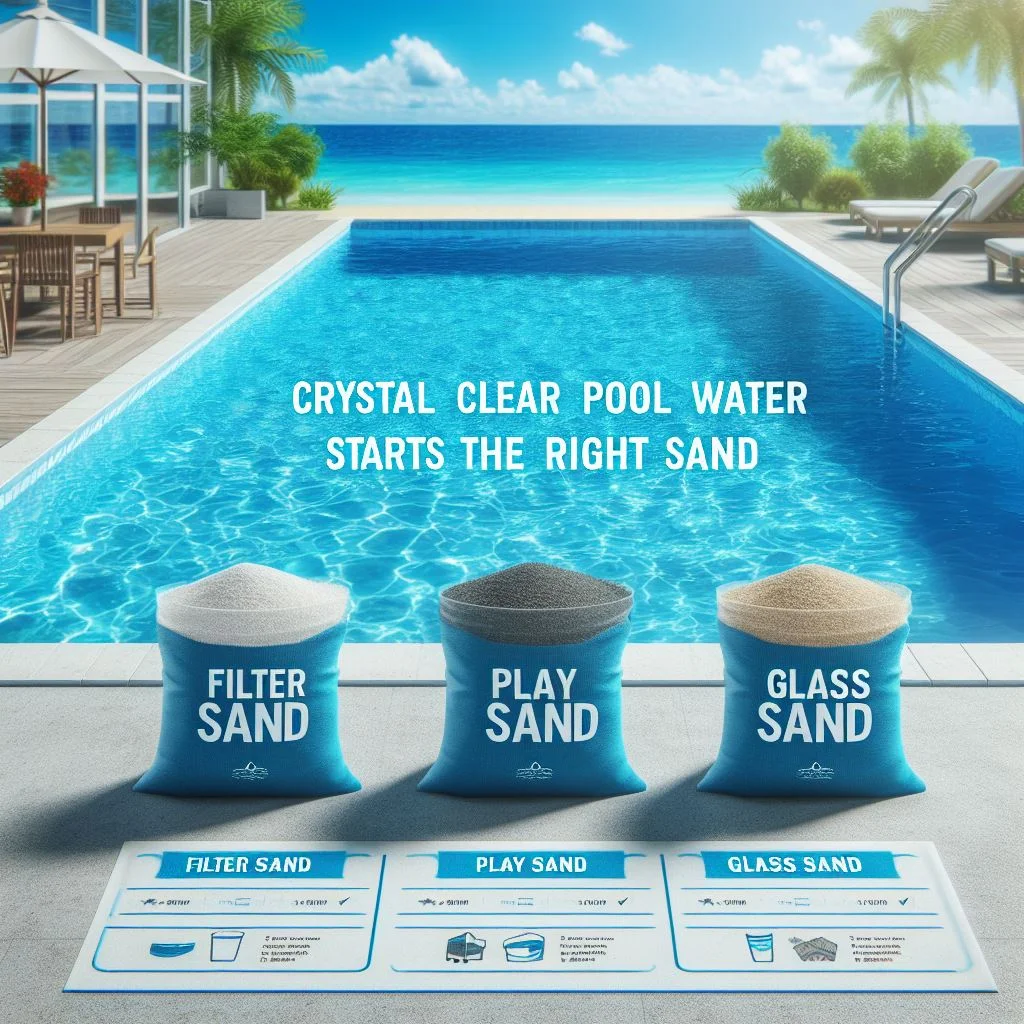
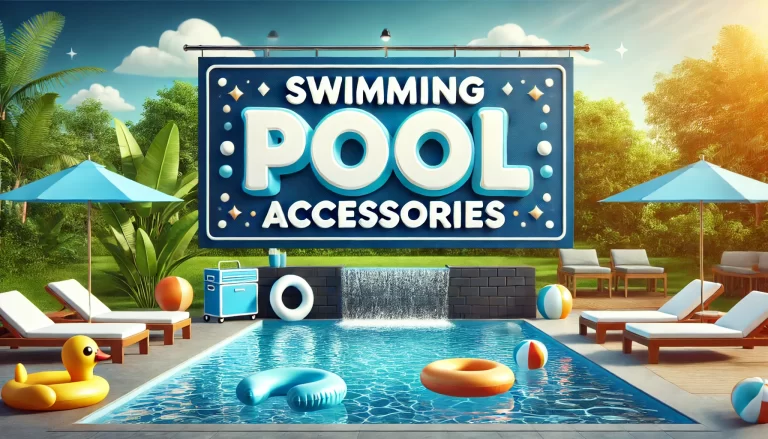

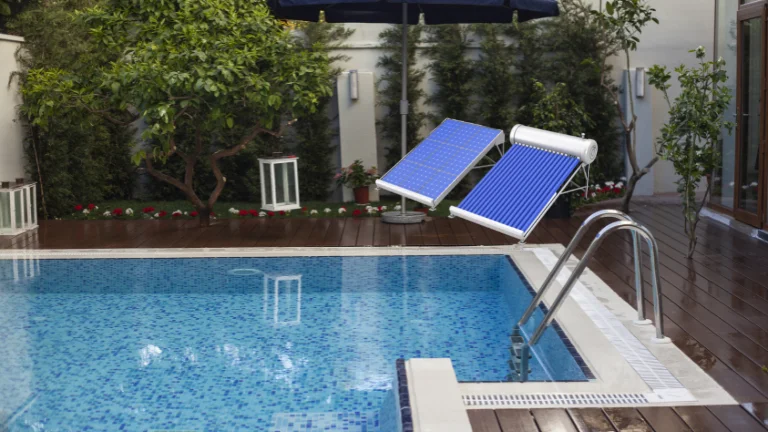
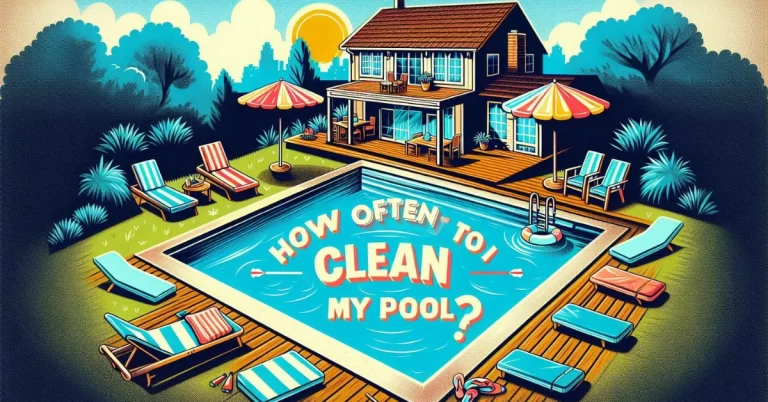

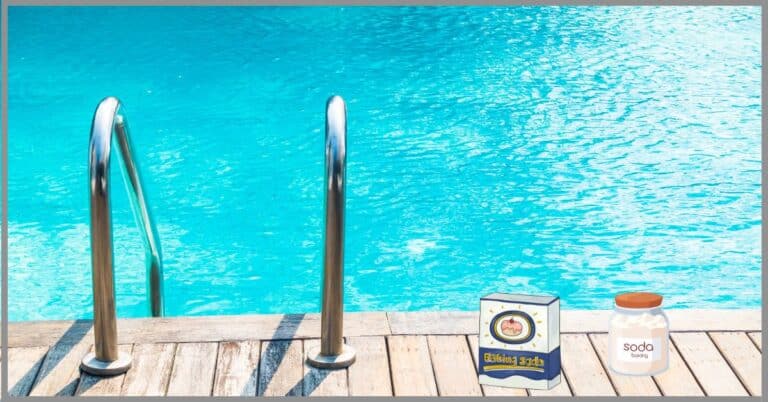
3 Comments